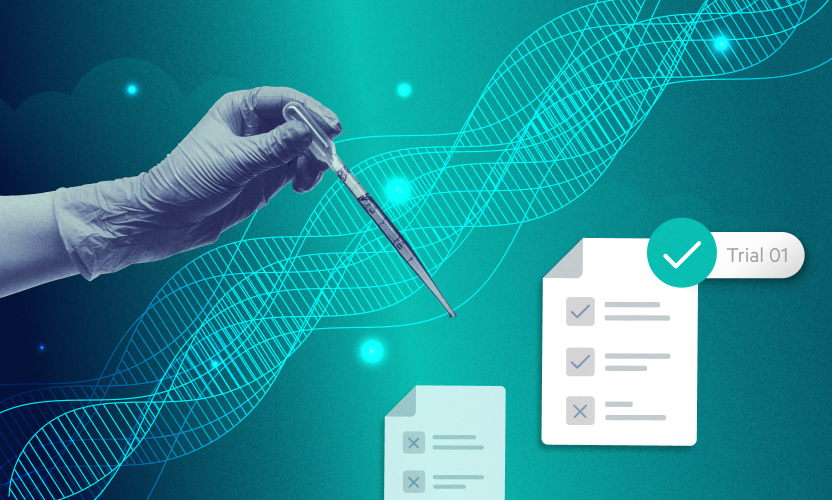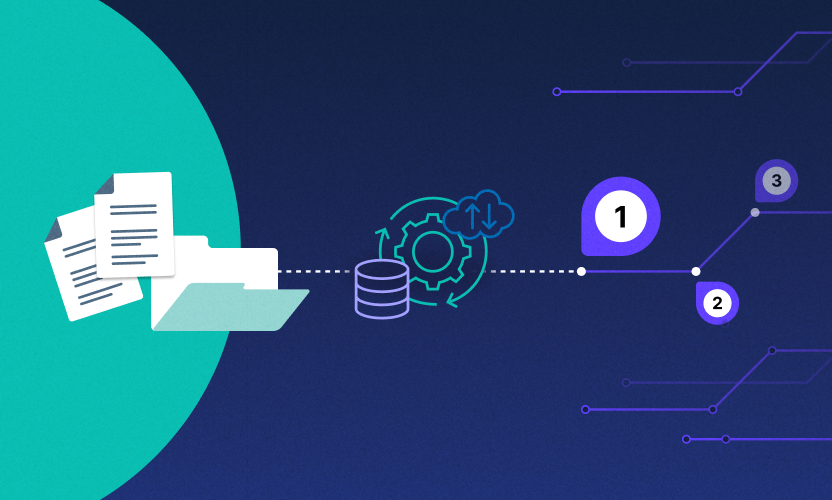
6 Ways Biotechs Can Use AI, Automation to Maximize Data at Scale
For years, biotechs have been hampered by the administrative burden of seemingly endless amounts of diverse, siloed data, slow data ingestion, and security threats coming from internal and external sources.
And yet, the life sciences industry continues to see double-digit growth. It’s now worth $285 billion a year, with no signs of slowing down. This puts biotech companies under increased pressure as they attempt to ride this momentum and deal with the mounting problems caused by long-standing data management issues.
Thankfully, AI and automation present opportunities for biotechs to sustain, and even supercharge their growth. Let’s look at six ways fast-growing biotechs can lean on these emerging technologies to organize, analyze, and protect data at scale.
Manage the Endless, Diverse Datasets
Emerging biotechs capture and process more data than ever. This data can come from preclinical research, or clinical trials, or outsourced management of research and studies. These nimble companies move quickly, but they face a significant barrier to growth if they can’t manage that data for operational efficiency, digital security, and regulatory compliance.
AI and machine learning tools and services can comb through accumulated data, acting as a kind of internal police force. They’re faster than humans. They’re also less prone to errors, so they can classify and organize submitted data into the correct folder structure. This saves researchers and monitors time on menial work, so they can focus on higher value tasks, like progressing discovery or improving patient safety.
AI models can also be trained to automatically recognize important or regulated datasets and sequester them for regulatory compliance. This is especially useful for dealing with private health information (PHI) and personally identifiable information (PII) that may be subject to privacy regulations.
Multi-year studies can easily generate hundreds of thousands of documents—many trials go into the millions—which cannot possibly be monitored manually. AI is the only way to ensure enormous data sets are properly classified, organized, tagged, and de-risked, flagging documents that are “out of spec” for manual review.
Get Data out of Silos for Improved Research and Collaboration
Biotechs are often left with vast data silos due to the volume and velocity of unstructured data, as well as the constant churn of mergers and acquisitions. They’re left with a patchwork of misaligned, outdated, and incompatible data sets that require tremendous manual effort to sort through and organize for research and collaboration.
AI and machine learning have become the go-to solution for this challenge. They organize and identify siloed data repositories into managed data lakes. By using AI and machine learning to break down data silos, biotechs see:
- Faster drug development with computerized models
- Accelerated trial monitoring using real-time analysis of source data
- Successful identification and redaction of PII and PHI
- The development of more accessible data lakes
- Improved insight from larger, more organized data sets
Accelerate Data Ingestion from CROs
When biotechs work with contract research organizations (CROs), they often need to ingest and organize data from disparate locations. These can include:
- Cloud computing platforms like AWS, Microsoft Azure, and Google Cloud, as well as cloud repos such as Egnyte, Box, and OneDrive
- Life science-specific applications like SAS, LIMS, and eCOA
- Productivity software like Microsoft 365 and Google Workspace
- Ticketing systems like Jira and Zendesk
- E-Signature services like Docusign and Adobe Sign
These are traditionally slow processes, often done manually to transition from one system to another. If errors are detected, the file has to be sent back to the originator for correction, which can slow down the whole process.
And as the volume of data in the life sciences industry continues to ramp up, so too have resource requirements. In the era of hiring challenges, this can be a bottleneck.
Process automation can be used to set up automatic data validation, accelerating the ingestion, validation, and routing of tasks. This prevents incompatible data formats from ever reaching the hands of researchers, saving them valuable time and effort.
Defend Your Research Against Hackers
Biotechs are often prime targets for hackers due to lax security controls. In the age of COVID, protecting trial data is crucial, not just for industry giants like Johnson & Johnson or Moderna but for their biotech vendors as well. Data changes hands between these organizations constantly.
The total cost of the average ransomware attack nearly doubled in 2021, jumping to $1.85 million, while the average payment currently sits at more than $170,000. In addition, insider threats are becoming more common and harder to spot. Rogue or careless employees can fall for phishing scams or turn over access to protected, sensitive data entirely by accident.
With the amount of outsourced partners interacting with your data, the risk profile is greater than most industries. You are only as safe as your riskiest partner, and typically, trial sites and individual consultants don’t have the IT resources to stay on top of every emerging cyber threat.
Proactive risk management, driven by AI, can mitigate risks by setting up and enforcing a variety of security policies. This can include managed folder access, data encryption, and suspicious behavior reporting.
Taking a proactive risk mitigation approach with AI can save companies countless sums of money from data breaches, as well as support a more remote workforce.
Secure Data Absorbed Through Acquisition
Mergers and acquisitions are commonplace in the life sciences industry. Each new acquisition invites new security risks, which necessitates stronger security postures.
When biotechs are purchased, their data is absorbed into another company’s datasets. Sometimes this new data is managed appropriately, but oftentimes it’s not—making it valuable targets for hackers.
Biotechs can use AI to easily classify sensitive data and create company-wide retention, archival, and deletion policies, all using custom metadata, to maintain regulatory compliance and deter hackers. This locks down data against internal theft or improper access while externally preventing hackers from using stolen data.
Comply With Data Regulations
Life sciences businesses are subject to a litany of regulations, which makes compliance nearly impossible without proper support. Biotechs seeking to retain document and data compliance need to meet standards set out by GDPR, the FDA, SOX, and more. Failure to comply can result in fines or even cessation of business operations.
To stay compliant, you need to stay on top of accumulated data and clinical documentation. As we already discussed, automated platforms can easily and efficiently classify sensitive or protected data and store it in password-protected folders.
Additionally, AI can create regulation-compliant, data retention, archiving, and deletion policies to help users centralize and manage their data in the event of an audit. Compliance can reduce the likelihood of fines and even save on storage costs.
Egnyte Is Driving the Industry Forward
From pandemic vaccine research to the discovery of life-saving drugs, biotechs are ingesting, processing, and working with some of the most important data in the world. Biotechs need ways to automate their processes, employ modern AI and machine learning technologies, and stay safe from security threats.
It’s a tall order for any company to meet, which is why biotechs need a content governance solution tailor-made to stop security threats, automate processes, and make use of artificial intelligence.
Egnyte is a content governance solution with features built to handle your data. Egnyte streamlines your processes through automation and AI. It also keeps your enterprise safe from digital security threats and compliant with regulations. It’s built to handle your mission-critical data so you can scale your operations and grow in response to challenges in the life sciences industry, not shrink away from them.
To learn more about this topic, check out our recent discussion from the Egnyte Exchange global summit titled “Challenges and Opportunities for High-Growth Biotechs.”





